SingaporeMotherhood | Baby & Toddler
August 2023
Hearing Loss in Babies & Children – The Silent Epidemic
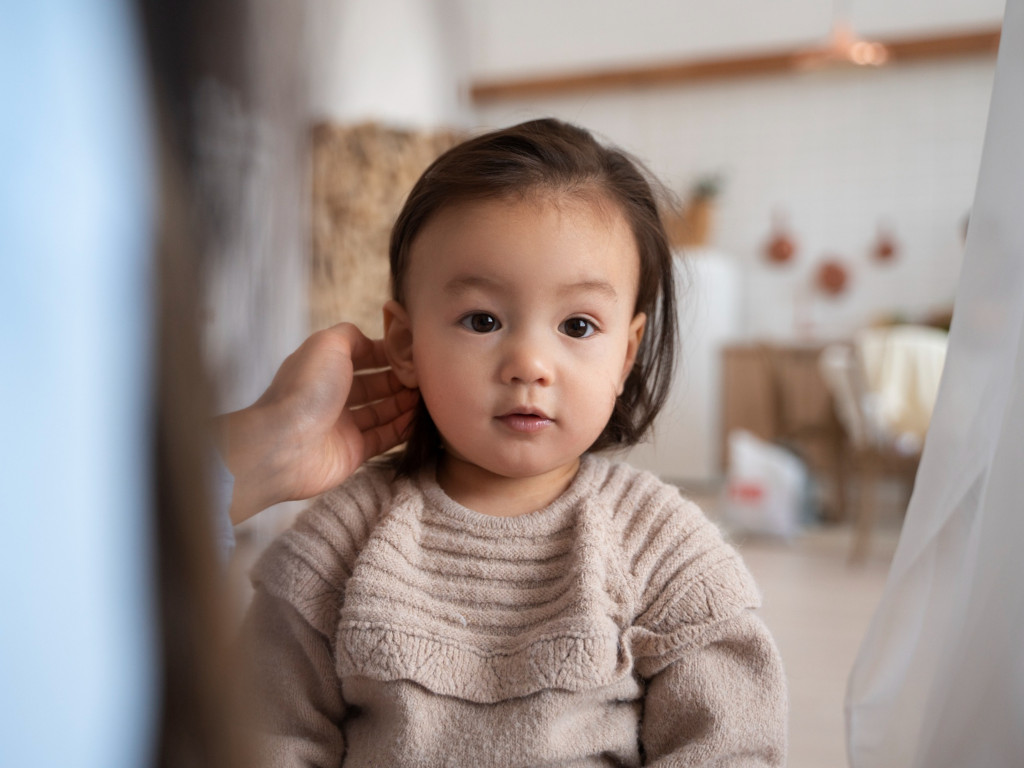
Hearing loss is not just a problem for the elderly. In Singapore, about 1 in 1,000 babies born each year has profound hearing loss, and 5 in 1,000 have some degree of hearing loss1. Others develop some form of hearing loss in early childhood. In fact, hearing loss is the most common congenital and acquired sensory deficit in children2. But what’s causing this silent epidemic?
As we know, hearing is the process of sound travelling through our ears. However, it’s actually our brain that interprets and makes sense of the sounds. When the brains of babies and young children receive the stimulation they need, they are able to develop essential speech, language, and social skills.
So when children suffer hearing loss from an early age, the resulting challenges may seem insurmountable. This is why, says Winnie Ng, senior principal audiologist at Novena ENT-Head & Neck Surgery Specialist Centre, early intervention is key. Ms Ng tells us more about hearing loss in babies and children, and offers some sound advice.
(See also: WHY EARLY INTERVENTION IS IMPORTANT IF YOUR CHILD HAS LEARNING OR LITERACY DIFFICULTIES)
What is Congenital Hearing Loss?
Congenital hearing loss is a form of hearing loss present at birth. It may be hereditary, although 90 per cent of babies with congenital hearing loss have parents with normal hearing.
Other common causes include pregnancy complications, such as when the mother is infected with rubella or cytomegalovirus (CMV) during pregnancy. Low birth weight is also associated with congenital hearing loss; hence premature3 babies are at higher risk.
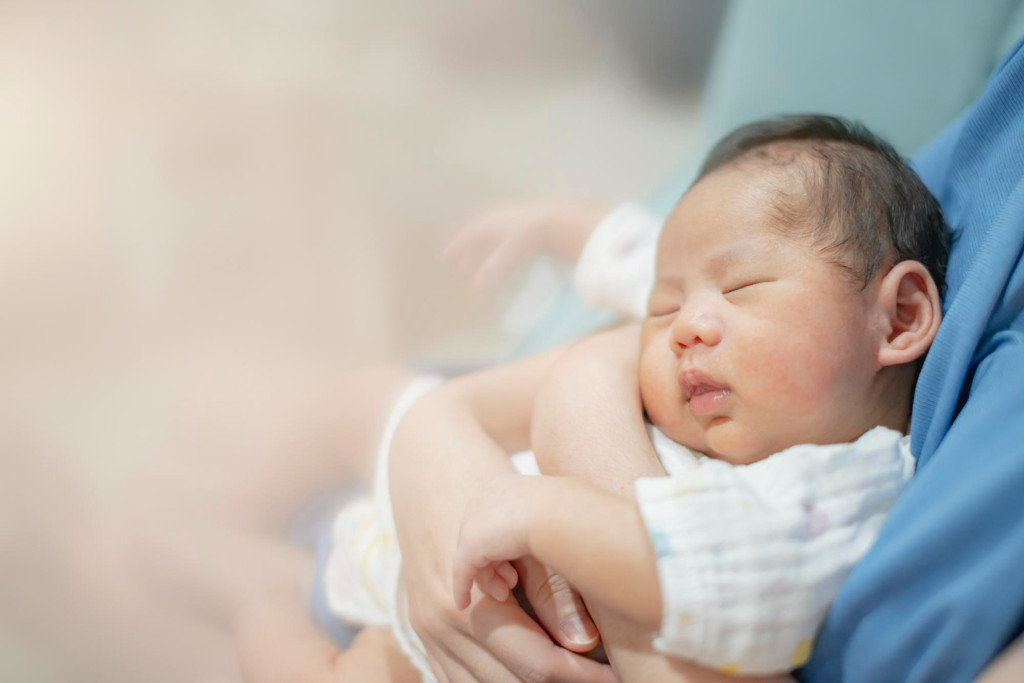
While some causes are not preventable, congenital deafness due to environmental factors can be. For example, rubella is a disease that can be prevented by vaccination. Other factors include awareness of the adverse effects of drugs and alcohol during pregnancy and early treatment of jaundice.
If it affects the inner ear (cochlea) or auditory nerve — also called sensorineural hearing loss, the damage is usually permanent. While the condition may be irreversible, early detection and intervention can help to mitigate the child’s speech and language developmental challenges.
Fortunately, all babies born in Singapore have access to newborn hearing screening at birth. This helps in the early diagnosis even in infants as young as a few days old. Screening takes place in the hospital before discharge. Babies who do not pass the screening will be sent for a repeat test, and eventually referred to an ENT (Ear, Nose, Throat) specialist for confirmatory testing and subsequent management.
(See also: PRENATAL SCANS AND TESTS FOR YOUR PEACE OF MIND WHEN PREGNANT)
What is Childhood Hearing Loss?
Childhood hearing loss generally refers to hearing impairments that develop at a later stage in babies or during childhood. Some risk factors for delayed-onset or progressive hearing loss are family history, premature birth, and syndromes associated with deafness.
High fevers, ear infections (eg: otitis media), and brain infections (eg: encephalitis and meningitis) can also result in hearing loss. Injuries to the head, as well as prolonged exposure to loud noises, are some other common environmental causes.
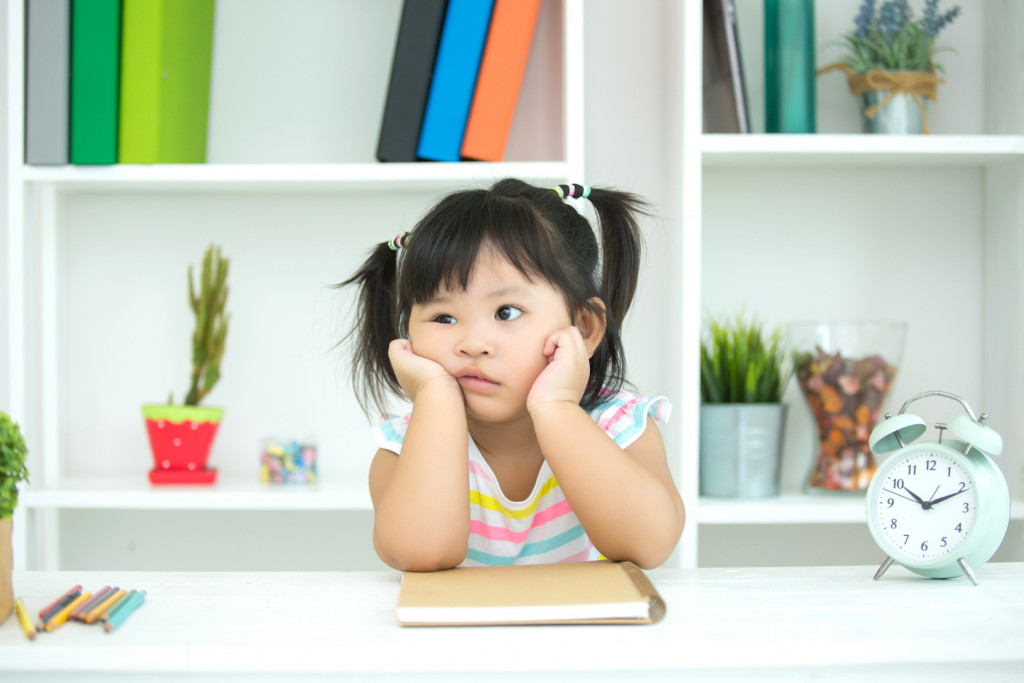
If the inner ear and/or hearing nerve are damaged, the hearing loss is usually irreversible. An example of this would be noise-induced hearing loss, which is painless and happens gradually. Globally speaking, an estimated 12.5 per cent of children and adolescents already have some degree of noise-induced hearing loss4.
Here in Singapore, at least one in six youths are at risk5. While there is little we can do about hereditary or illness-related hearing impairment, we can surely limit our children’s exposure to excessively loud music.
Hearing loss can happen at any age. Ms Ng encourages parents to constantly interact with their child through talking, reading, and playing. That way, if there is something amiss with your child’s hearing or speech, you will know it is time to call your doctor!
(See also: PAEDIATRICIANS AND PAEDIATRIC CLINICS IN SINGAPORE THAT PARENTS TRUST)
Signs and Symptoms of Hearing Loss in Children
Babies who pass the hearing screening tests at birth can still develop hearing issues when they are older. Therefore, parents must stay vigilant and look out for signs of hearing loss.
Signs range from speech delays to not being startled by loud sounds, such as thunder or a door banging shut. Poor response when calling their name and an inability to follow basic commands are also potential signs — your little one may not be ignoring you on purpose.
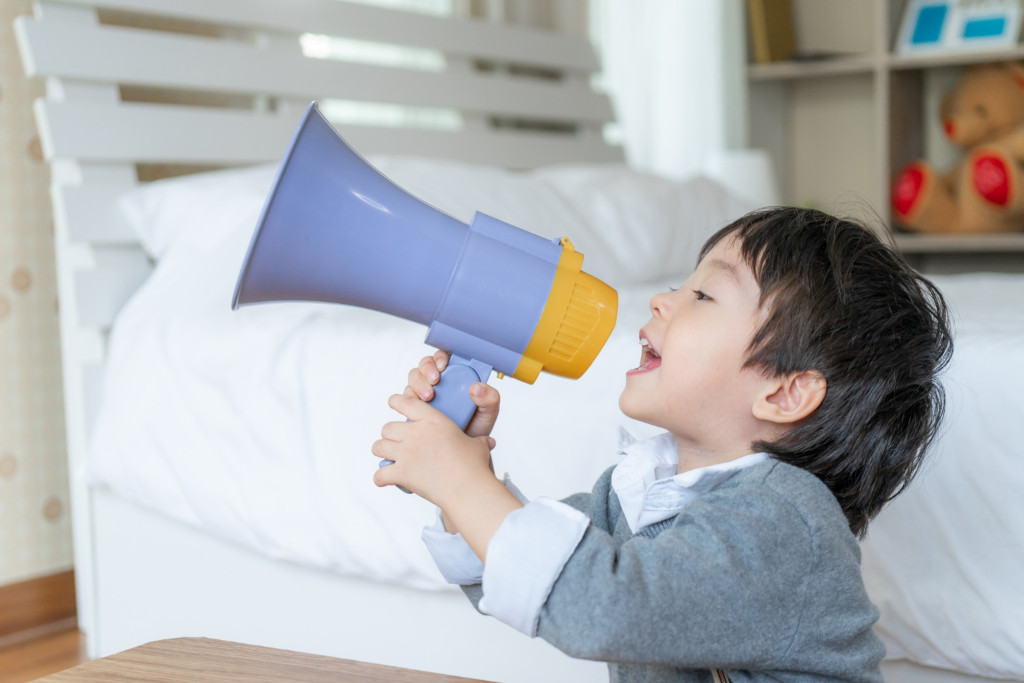
Understanding age-appropriate hearing and developmental milestones is a useful ‘diagnostic’ tool for parents. Schedule an appointment with a doctor if your child is not meeting these hearing milestones within a reasonable time frame:
0 to 3 months
- Startles to loud sounds
- Soothes or calms to a familiar voice
- Looks at the face of the person speaking
- Makes vocal sounds, such as cooing and gurgling
3 to 6 months
- Looks to see where sounds are coming from
- Starts to make speech-like sounds such as “ga” and “ba”
- Enjoys rattles and playing with noisy toys
- Laughs and makes noises to show pleasure and displeasure
6 to 9 months
- Babbles, makes repetitive sounds such as “mama” and “dada”
- Responds to “no” and own name
- Vocalises to get attention
- Responds to singing and music
9 to 12 months
- Turns head to soft sounds
- Understands simple words such as “bye bye”, “ball”, and “dog”
- Imitates speech sounds others make
- Says first words
12 to 18 months
- Says more words as each month passes
- Understands action words such as “jump” and “run”
- Enjoys being read to
- Starts to form two- to three-word sentences
(See also: CHILDHOOD DEVELOPMENT: IS MY CHILD MEETING MILESTONES AT THE RIGHT TIME?)
My Child is Diagnosed with Hearing Loss — What Comes Next?
Treatment depends on the type and severity of the hearing loss. For example, if there is middle ear infection or fluid, oral antibiotics might resolve the problem.
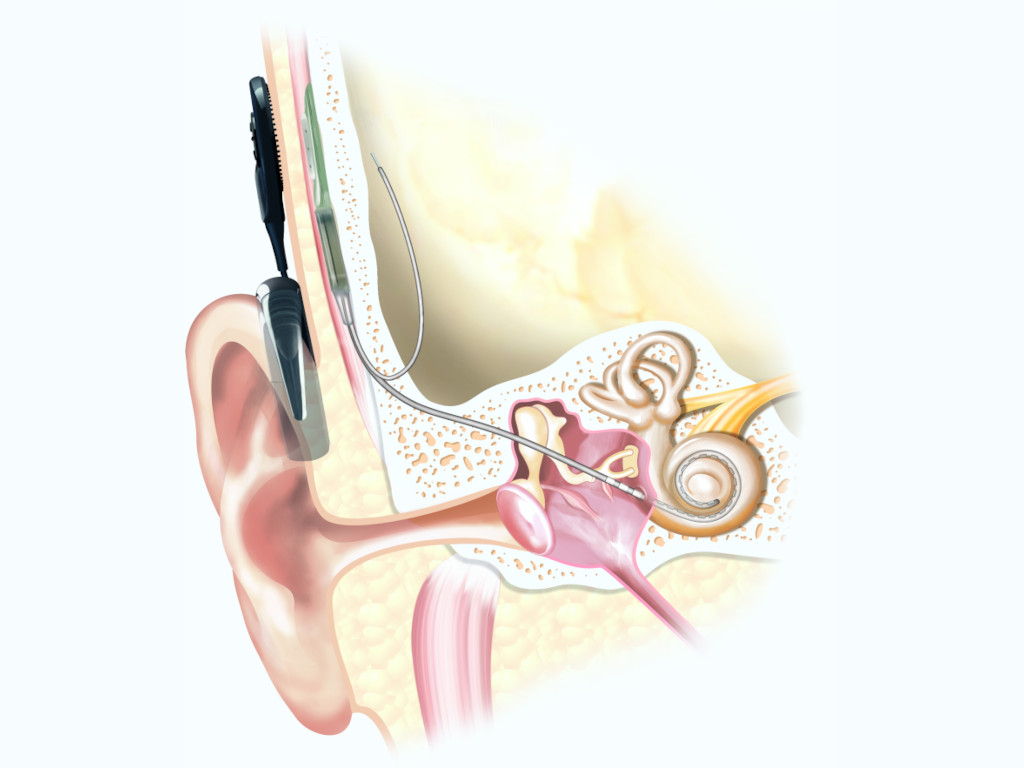
For more long-term conditions, treatment options include a combination of hearing amplification and complementary therapies. Remember, early detection and timely intervention are key in preventing speech and language delays in babies and children with hearing impairments.
Hearing Aids
For those who require hearing amplification devices, there are hearing aids designed specifically with children in mind. According to Ms Ng, they can even fit babies as young as a few weeks old!
Cochlear Implants
A type of neuro-prosthesis that can help children with severe or total hearing loss, cochlear implants comprise two parts. Firstly, an electrode is surgically implanted to directly stimulate the hearing nerve fibres in the cochlea and sends electrical signals to the brain via the hearing nerve, thereby creating sound sensations.
The second component is an external speech processor the child wears on the ear. This picks up sounds from the environment, converts them into digital information, and sends it to the implant under the skin via a transmitting coil.
(See also: SPEECH & LANGUAGE DELAYS IN TODDLERS – CAN SPEECH THERAPY HELP?)
Complementary Therapies for Children with Hearing Loss

Yet amplification devices are only the first step, Ms Ng says. Complementing the devices with suitable therapies will give your child the best chance at developing speech and language patterns comparable to those of hearing children. For example, speech therapists may use sign language to facilitate communication in children who have not yet developed language.
Auditory Verbal Therapy (AVT)
A form of aural rehabilitation, AVT complements the medical treatment in order to achieve optimal results. It aims to maximise residual hearing through hearing technology such as hearing aids or cochlear implants to help hearing-impaired children. Therapy should begin as soon as the child, even an infant, has been fitted with hearing devices.
Simply put, the Auditory-Verbal approach helps children with a hearing impairment learn to listen and develop spoken language. Both child and parents participate together in regular individualised sessions. While the child learns how to listen, parents learn how to create a listening environment at home through play and everyday routines.
Can My Hearing-Impaired Child Attend Mainstream School?

With appropriate early intervention and family support, many hearing-impaired children do grow up in regular learning environments, succeed in mainstream education, and eventually become independent, contributing citizens in society.
So if your child is diagnosed with hearing loss, don’t despair. Speak with your ENT specialist or audiologist to discuss the most suitable treatment and early intervention options for your child so that they can have the best opportunities in life.
(See also: SPECIAL EDUCATION AND INCLUSIVE PRESCHOOLS AND SCHOOLS IN SINGAPORE)
References:
1 The Singapore Association for the Deaf; https://sadeaf.org.sg/about-deafness/introduction/
2 Dr Jean Roschelle Alonso, ‘Advancing Intervention for Children with Hearing Loss’; https://www.kkh.com.sg/news/patient-care/advancing-intervention-for-children-with-hearing-loss
3 ‘Prevalence and Risk Factors for Hearing Loss in Neonates Admitted to the Neonatal Intensive Care Unit: A Hospital Study’, 2020; https://www.ncbi.nlm.nih.gov/pmc/articles/PMC7704024/
4 Preventing Noise-Induced Hearing Loss; https://www.cdc.gov/ncbddd/hearingloss/noise.html
5 ‘The music listening preferences and habits of youths in Singapore and its relation to leisure noise-induced hearing loss’, 2014; https://www.ncbi.nlm.nih.gov/pmc/articles/PMC4291932/
Featured image: Freepik
All content from this article, including images, cannot be reproduced without credits or written permission from SingaporeMotherhood.
Follow us on Facebook, Instagram, and Telegram for the latest article and promotion updates.





